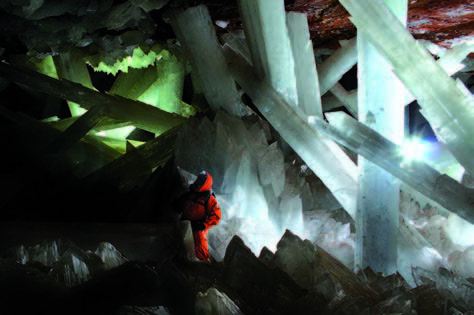The Mineralogical Study on the Cueva de Las Vegas (Naica, Mexico)
DOI:
https://doi.org/10.3986/ac.v36i3.171Povzetek
The Cueva de las Velas is the last cave unveiled at -290 level within the Naica Mine; the cavity has been intercepted by a mine gallery at the beginning of 2005. One of its peculiarities is the widespread thick deposits of diagenetic minerals deposited over the cave walls before the beginning of the evolution of the giant gypsum crystals. These deposits consist of complex, often scarcely crystalline iron-manganese-lead oxides-hydroxides, but carbonates, sulphates and silicates are also present. Other minerals, mainly sulphates, started developing just after this area of the mine was dewatered some 20 years ago. Presently 17 different minerals have been observed, 5 of which (orientite, starkeyite, szmolnokite, szmikite and woodruffite) are completely new for the cavern environment. The study of these minerals, together with the presence of a completely new type of gypsum crystals, allowed to improve the knowledge on the speleogenetic evolution of this cave, which seems to be by far more complex than that of the other cavity of the -290 level.Its complexity is reflected by the activity of a larger number of different speleogenetic mechanisms. Among them are worth of mention the thermal corrosion/dissolution, the anhydrite-gypsum disequilibrium, the acid aggression, and the capillary migration and evaporation.
Prenosi

Prenosi
Objavljeno
Kako citirati
Številka
Rubrike
Licenca
Avtorji jamčijo, da je delo njihova avtorska stvaritev, da v njem niso kršene avtorske pravice tretjih oseb ali kake druge pravice. V primeru zahtevkov tretjih oseb se avtorji zavezujejo, da bodo varovali interese založnika ter da bodo povrnili morebitno škodo.
Podrobneje v rubriki: Prispevki




